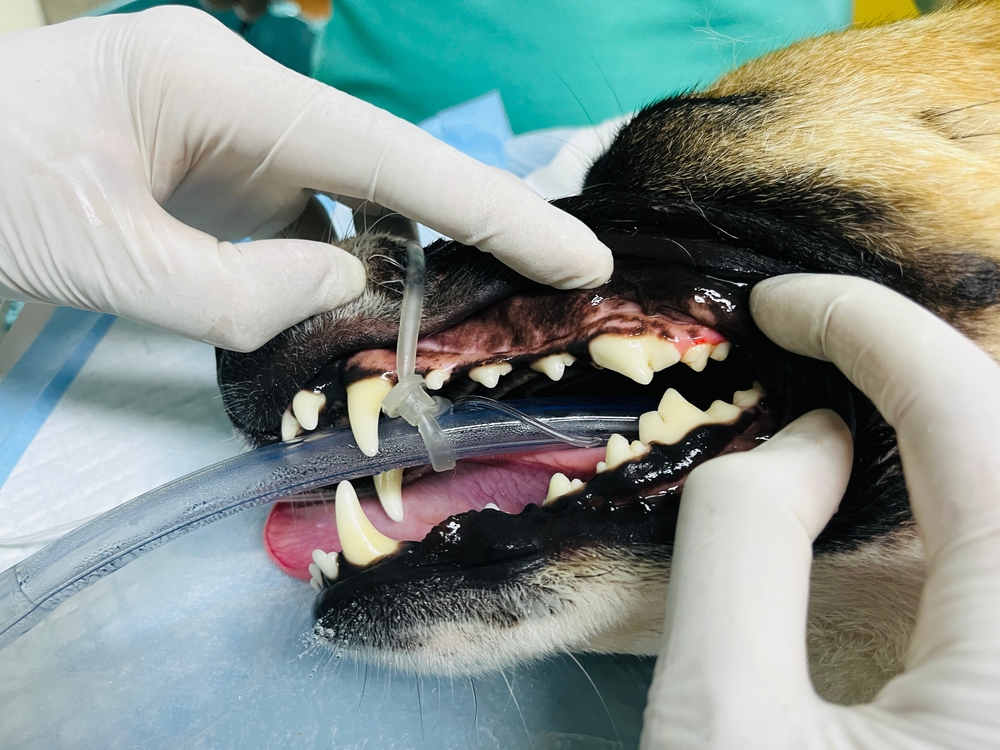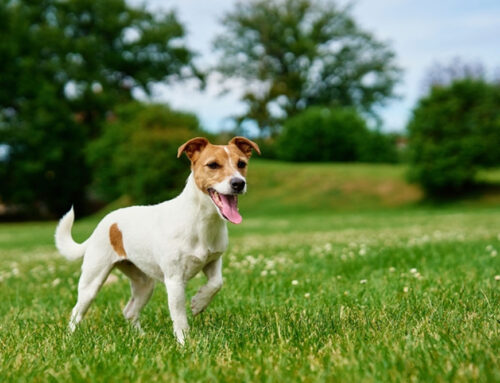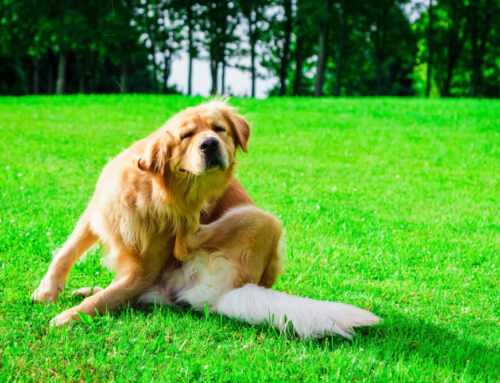The thought of brushing your pet’s teeth likely elicits panic as you imagine the wrestling match that may ensue. These fears are common among pet owners, but despite your hesitation, your pet’s regular toothbrushing matters. You and your pet have similar dental care needs, but many well-meaning pet owners neglect to create a daily dental care routine for their furry pal. Your pet’s dental health is about more than fresh breath and pearly white teeth. Dental disease is one of the most common—and preventable—pet diseases, and daily toothbrushing, along with regular professional dental cleanings, greatly reduce your pet’s risk. February is National Pet Dental Health Month, and our Oliver Animal Hospital team is taking a bite out of dental disease by sharing a comprehensive guide to brushing your pet’s teeth—while helping ensure you keep all your fingers!
Why is brushing your pet’s teeth important?
After your pet eats, sticky plaque adheres to their teeth. If the plaque is not promptly removed, mineral deposits from your pet’s saliva cause the plaque to harden and become gritty, cement-like tartar, which traps bacteria in and around their gumline. Bacteria under the gumline can damage your pet’s gums, bone, and other tooth-supporting structures, leading to serious health complications, including:
- Painful gums
- Loose or missing teeth
- Tooth root abscesses
- Eye problems
- Sinusitis
- Fractured jaw
- Organ damage
How do I brush my pet’s teeth?
Brushing your pet’s teeth daily is essential to removing plaque buildup before the substance hardens into tartar, which is impossible to take off by brushing alone. Ideally, you should introduce your pet to a toothbrush when they are young, but your furry pal is never too old to learn to tolerate toothbrushing. Follow these tips to get started:
- Gather essential tools — Before you brush your pet’s teeth, gather all the supplies you will need. Resist the temptation to grab an extra toothbrush and tube of toothpaste from your own medicine cabinet. Toothpaste for humans often includes fluoride, which can harm your pet if they swallow the product. Choose a pet-safe toothpaste in a tasty flavor that entices your pet. You will also need an appropriately sized, soft-bristled toothbrush that fits your pet’s mouth size, such as a child’s toothbrush or finger brush.
- Tantalize your pet’s taste buds — Introducing your pet to toothbrushing takes time and patience. Before you even bring out the toothbrush, simply offer your pet a taste of the toothpaste from your finger. Ideally, your pet will think the toothpaste is a treat, and want more.
- Use your finger first — Once your pet discovers toothpaste’s tastiness, rather than letting them lick the product off your finger, go a step further by using your finger to gently rub toothpaste on their teeth. This will help ease your pet into accepting a toothbrush next.
- Slowly introduce your pet to a toothbrush — If your pet accepts your finger and seems comfortable, you’re ready to introduce them to the toothbrush. Squeeze a small amount of toothpaste onto the toothbrush and offer it to your—hopefully eager—pet. Once your pet is licking the toothbrush, gently insert it into their mouth and begin slowly scrubbing their teeth.
- Clean those pearly whites — Continue brushing in a circular motion, focusing on the teeth’s outer, cheek-side surface, because your pet’s tongue usually does a good job of removing plaque on the inner surface.
- Praise your pet — Keep initial toothbrushing sessions short and sweet, and remember to praise your four-legged friend for a job well done!
- Supplement with dental chews — Pets love to chew, and appropriate dental chews are a great way to supplement your pet’s daily toothbrushing routine. When choosing any dental products for your pet, keep in mind that not all products are effective. Look for packaging that displays the Veterinary Oral Health Council’s (VOHC) seal of approval. These products have proven that they slow plaque and tartar accumulation, thereby keeping your pet’s mouth healthier. Additional products that promote your pet’s dental health include:
- Dental treats
- Water or food additives
- Oral rinses, wipes, and sprays
- Prescription dental diets
Schedule regular professional veterinary dental cleanings

Daily toothbrushing is an excellent way to help maintain your pet’s dental health. However, toothbrushing alone is not enough. As much as 60% of each tooth is below the gumline. Your furry pal’s dental X-rays and oral exams and cleanings—while your pet is sedated—are a must for your veterinarian to identify dental issues and remove plaque and tartar. While pets who are prone to dental problems may require more frequent oral care visits, most adult pets should have a professional oral examination and cleaning at least once a year.
By brushing your pet’s teeth daily and scheduling regular professional cleanings, you can greatly reduce plaque and tartar buildup, protecting your pet from dental disease. Contact our South Austin veterinarians at Oliver Animal Hospital to schedule your pet’s professional dental health exam and cleaning.







Leave A Comment